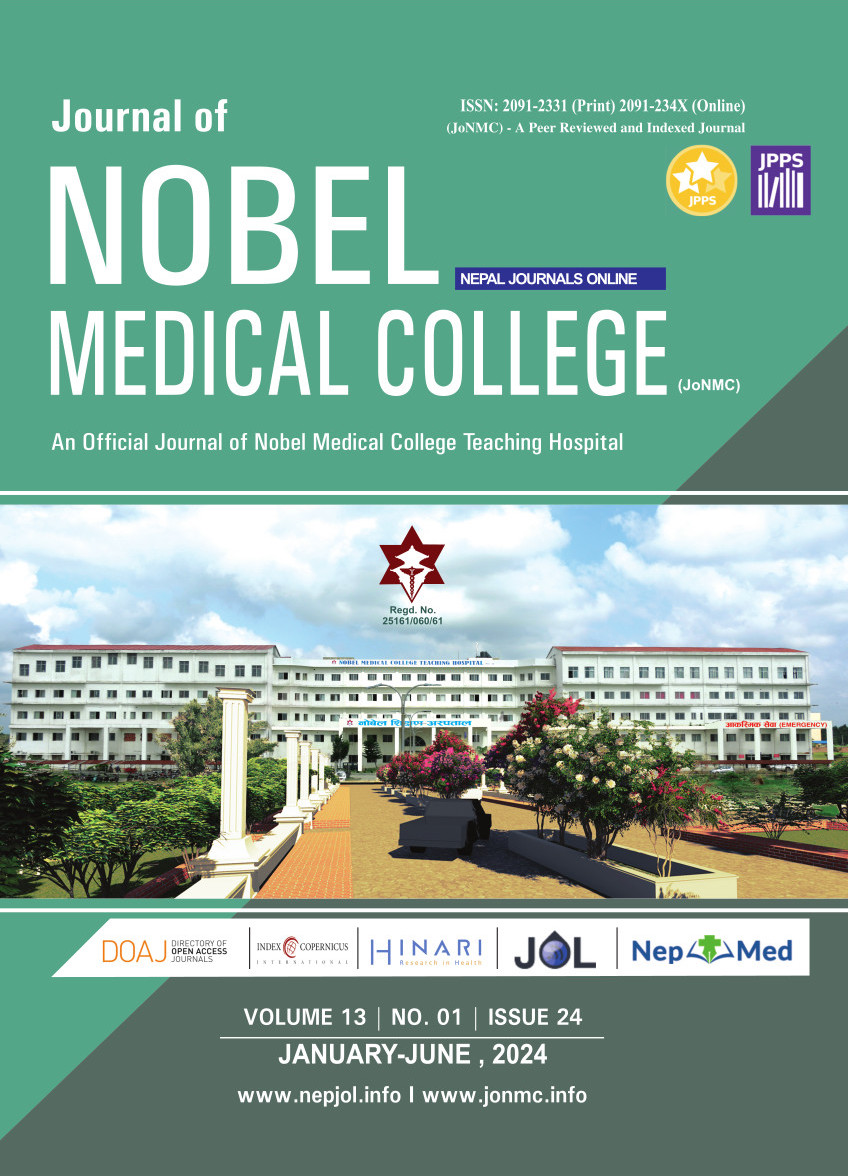Effectiveness of Kathmandu University School of Medical Sciences Medical Evaluation Scheme
DOI:
https://doi.org/10.3126/jonmc.v13i1.68113Keywords:
Assessment, Curriculum, Medical students, QuestionnaireAbstract
Background: Evaluation analysis the learning capabilities and check the knowledge with skills that students have gained during study period. Good evaluation scheme is a key issue in medical education. Evaluation scheme currently in use are reviewed with attention to their strength and weaknesses. The purpose of the present study was to determine perception of medical students regarding effectiveness of Kathmandu University School of Medical Sciences (KUSMS) medical evaluation scheme which may enhance the competency of the medical students as well as quality of medical education.
Materials and Methods: This study was cross sectional questionnaire based study which consisted of 250 (165 male and 85 female) medical students who have already appeared in university examination. A Google Form Questionnaire was generated and shared to the student in order to acquire their perception regarding KUSMS medical evaluation scheme. Data was collected and statistical analysis was done.
Results: Majority of the participants had shown their strongly agreement that KUSMS medical evaluation scheme is one of the best tool which help them to support in improving their learning skills and in obtaining good mark in their examination. Most of them also agreed that formative assessments give them the best opportunity to improve the weakness in their studies. Similarly, they preferred more integrated pattern of examination (current) rather than discipline based (subject wise) examination.
Conclusion: The assessment methods should match the competencies being learnt and the teaching methods being used. Several assessment methods are used longitudinally to assess the student’s learning needs and to identify optimal performance by the faculties.
Downloads
Downloads
Published
How to Cite
Issue
Section
License

This work is licensed under a Creative Commons Attribution 4.0 International License.
JoNMC applies the Creative Commons Attribution (CC BY) license to works we publish. Under this license, authors retain ownership of the copyright for their content, but they allow anyone to download, reuse, reprint, modify, distribute and/or copy the content as long as the original authors and source are cited.




